Defending champions Chelsea secured their first win of the year in the FA Cup against Nottingham Forest. They are safely through to the fourth round thanks to Callum Hudson-Odoi and Alvaro Morata twice. At first, it didn’t seem likely due to Nottingham Forest’s area-focused press and congested goal area. In the second half however, Chelsea eventually managed to find a solution, as this tactical analysis explains.
Chelsea made timely use of their transitional attacking to eventually breach their opponents’ last line of defence. The match also featured the farewell appearance of Chelsea’s talented and creative playmaker Cesc Fabregas. The former Arsenal man was partnered in central midfield by Ross Barkley and Ethan Ampadu.
Chelsea pushed back their opponents’ play
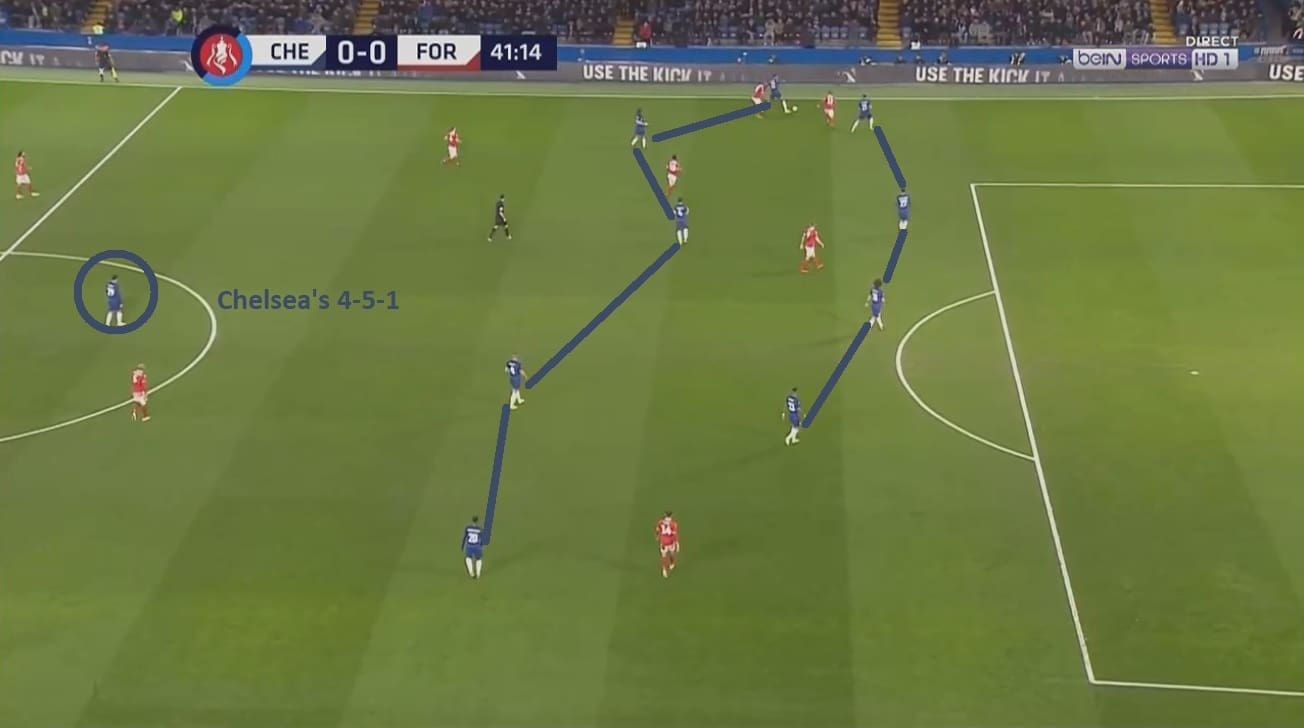
Chelsea played in a 4-5-1 formation without the ball as shown in the picture above. Chelsea’s defensive phase was designed to push back the opponents’ play from Chelsea’s midfield more than to win the ball there. This is because Nottingham Forest were congesting the midfield while deploying the tactic of the area-focused press.
As a result, the hosts had to put their attacking half at risk by winning possession there, as they would eventually lose the ball and concede pressure in dangerous areas. The images below illustrate how Chelsea risked attacks due to Nottingham Forest’s area-focused press.
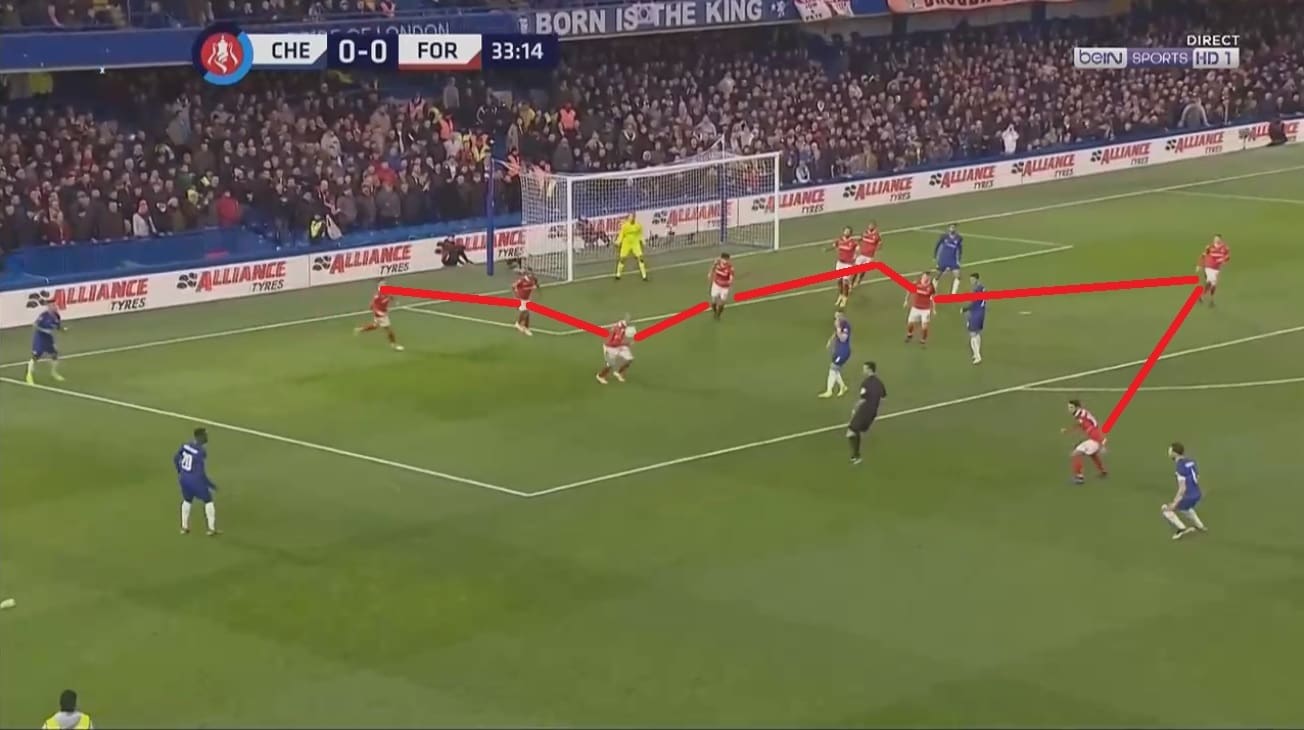
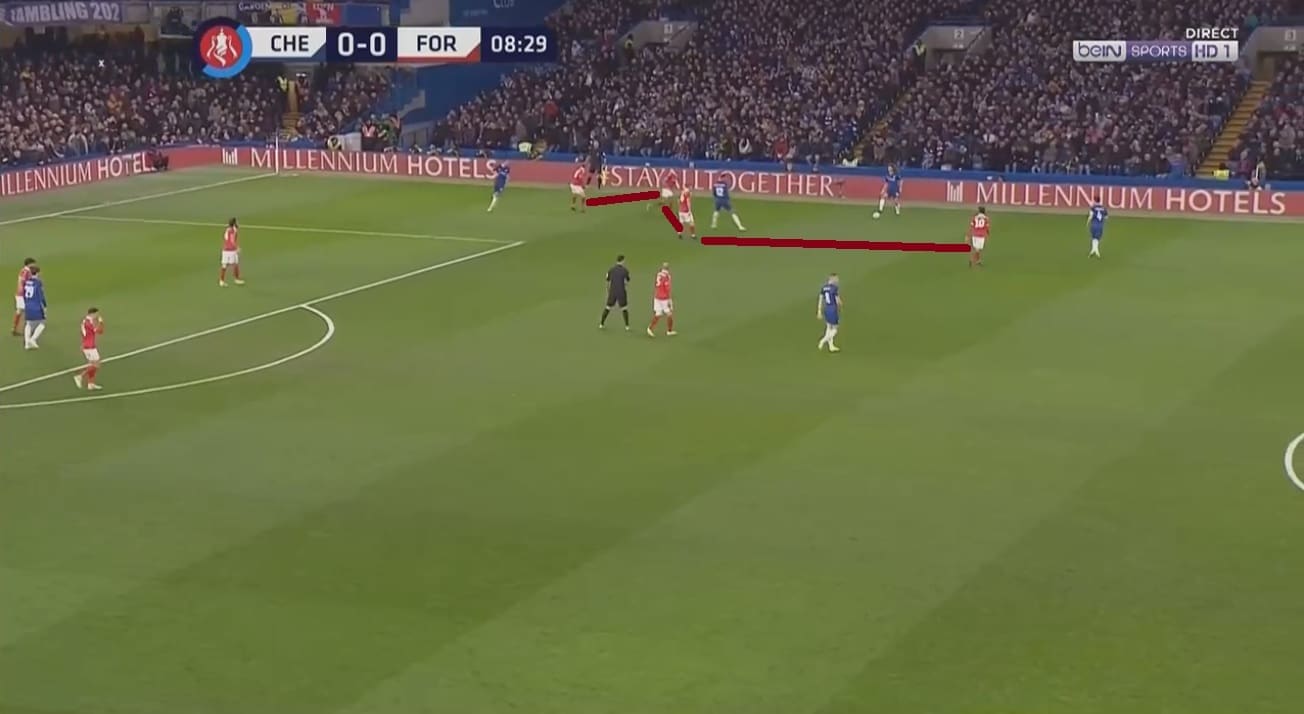
To deal with this, Chelsea pressed opposition players in possession, only to push them back and eventually play a long pass. That way Chelsea could win possession from the opponents’ long balls played without putting their zone at risk.
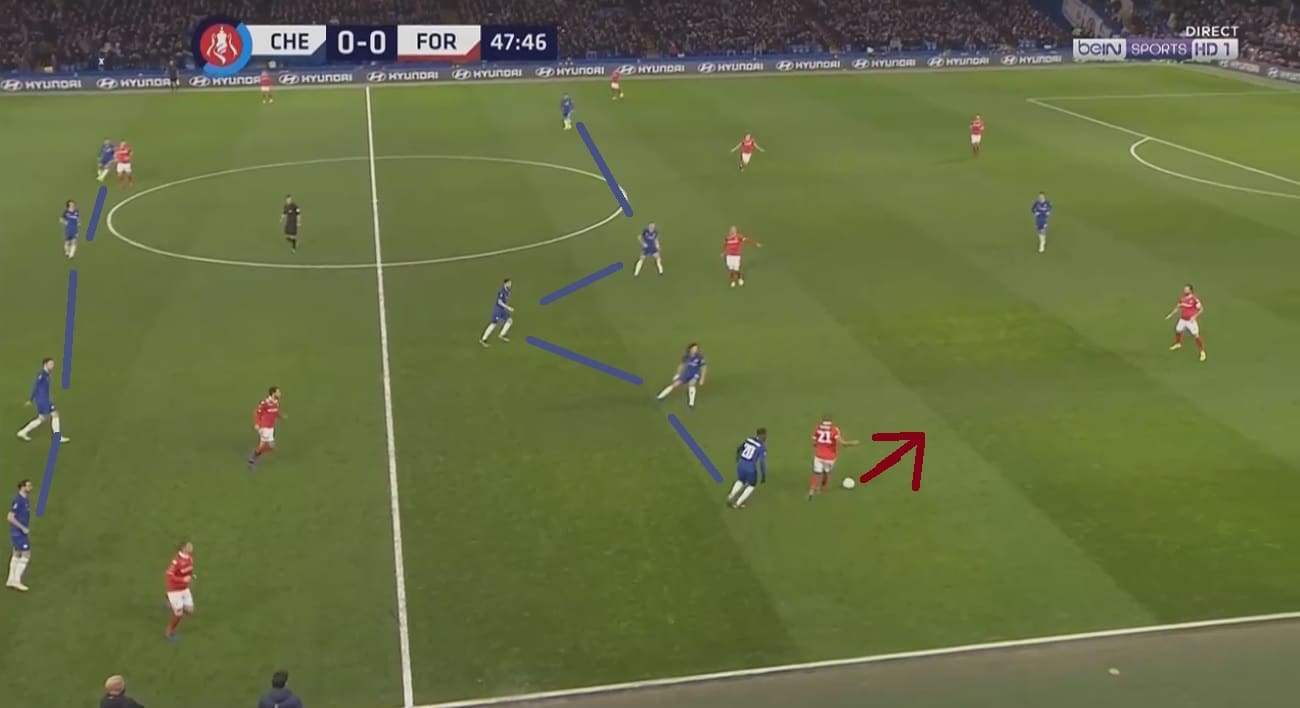
Nottingham Forest did, at times, dribble their way up to Chelsea’s defensive third mainly during the transitional opportunities. Thanks to Chelsea’s deep centre-backs, David Luiz and Andreas Christensen, the visitors found their attacking attempts nullified.
Chelsea sustained their play on the right flank
Chelsea played most of their attacks down the right, where they penetrated into the final third. The aim was to either conclude the attack from the right, or switch play to the left flank, thus dodging Nottingham Forest’s area-focused press. The images below show Chelsea’s consistent stay at the right flank during attacking phases.
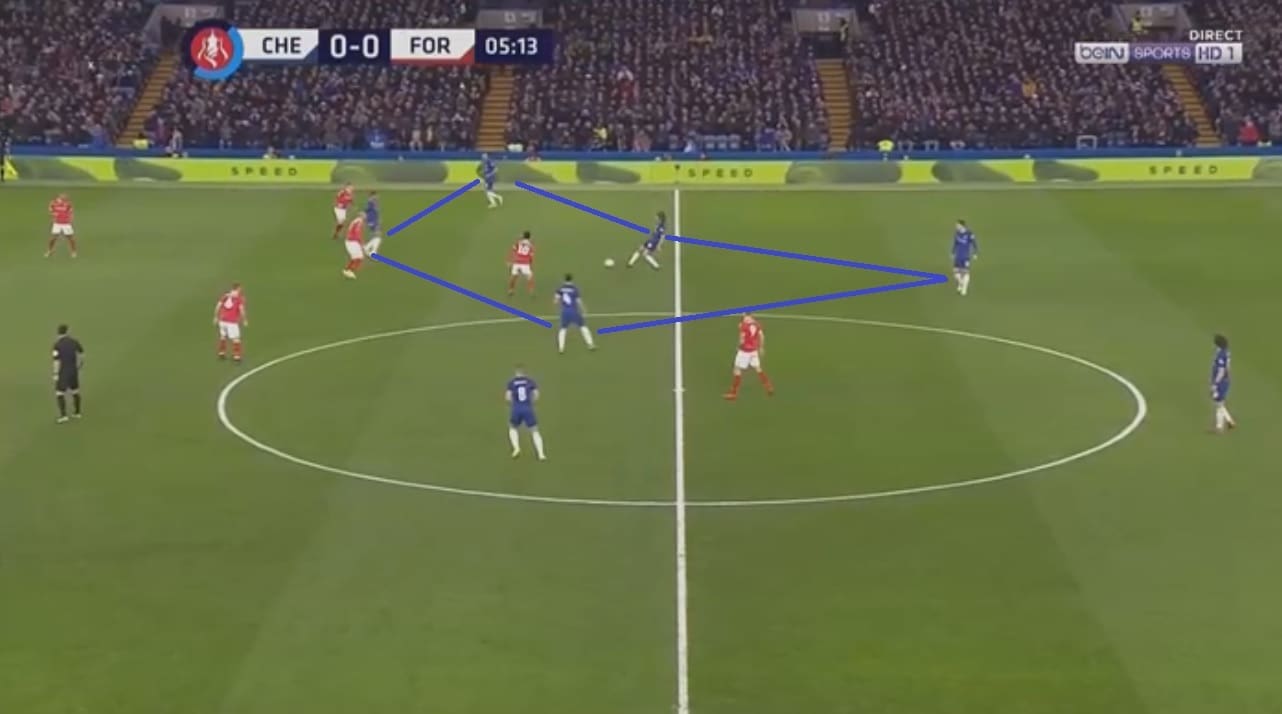
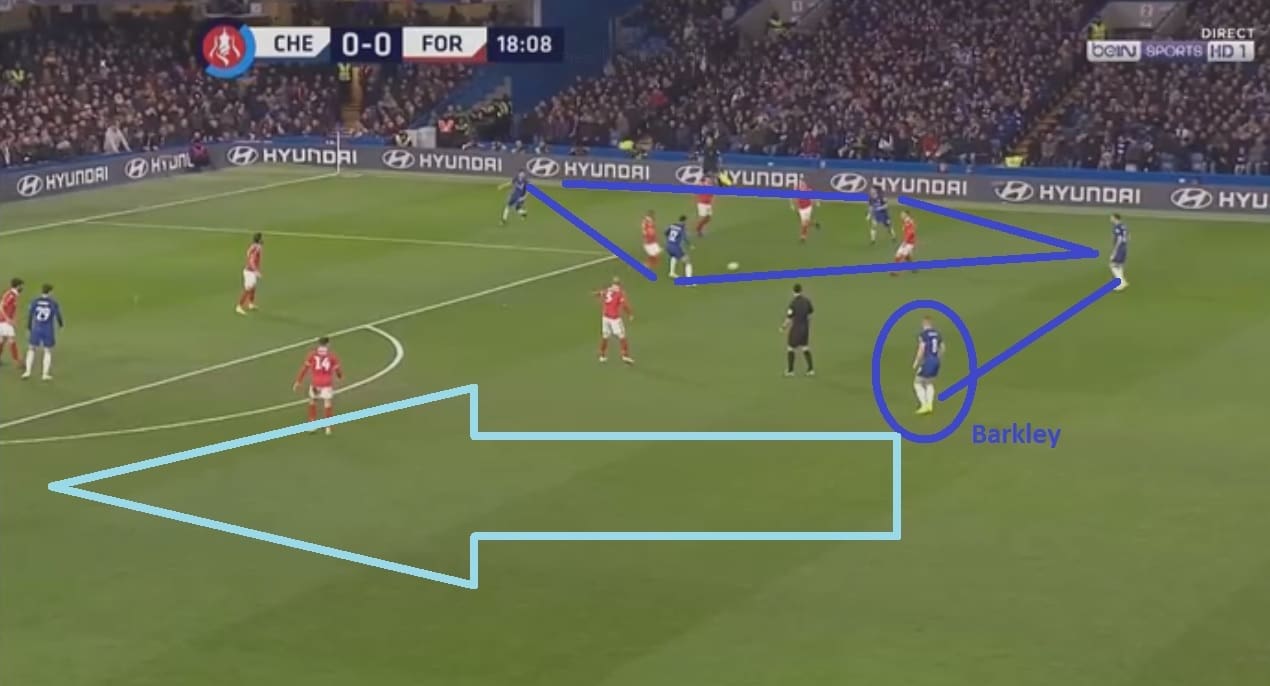
However, as the game progressed Chelsea started increasingly using of the left flank too. Chelsea also regularly used the central areas to contract play and congest the opposition defenders. This allowed them to eventually expand their play towards the more favourable flank, just as they had done in their recent win against Crystal Palace.
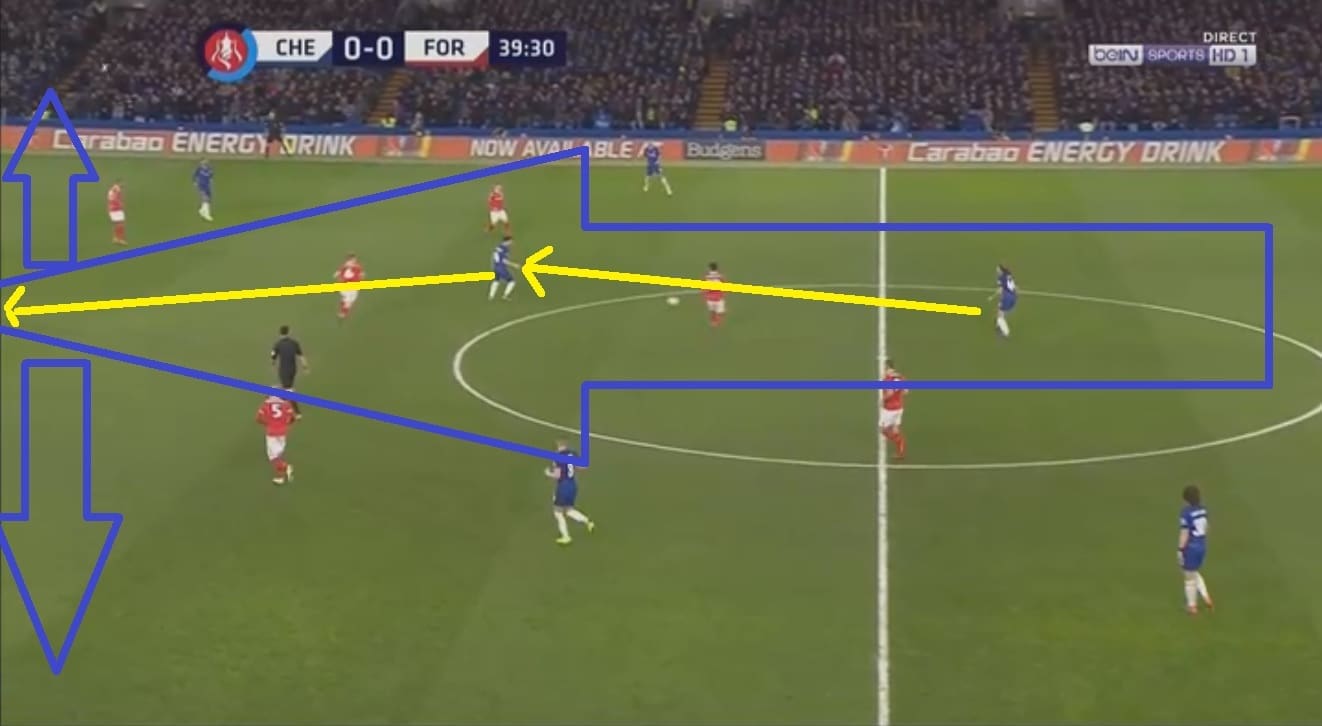
However, overall Chelsea preferred the right flank to sustain their passing play and conclude their attacks. Eventually, though, Sarri men lost many of their possessions from the right flank due to the same reason.
Chelsea stretched out their attack to breach Forest’s defence
In the first half, Chelsea forcibly concluded their attacks near the edge of the penalty area. This caused them to lose possession right after entering the box.
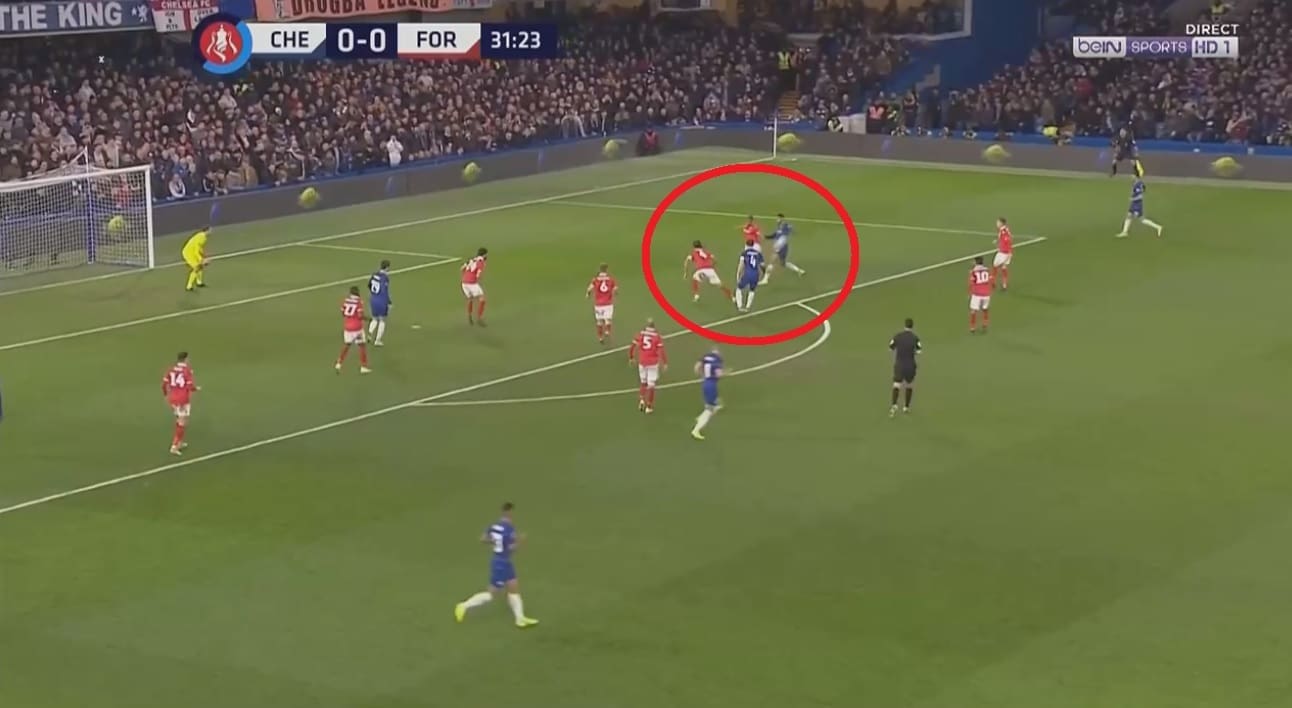
Nottingham Forest were able to nullify Chelsea’s attacks being concluded at or near the edge of the box because of their centrally compressed low-block defence, as shown in the picture below.
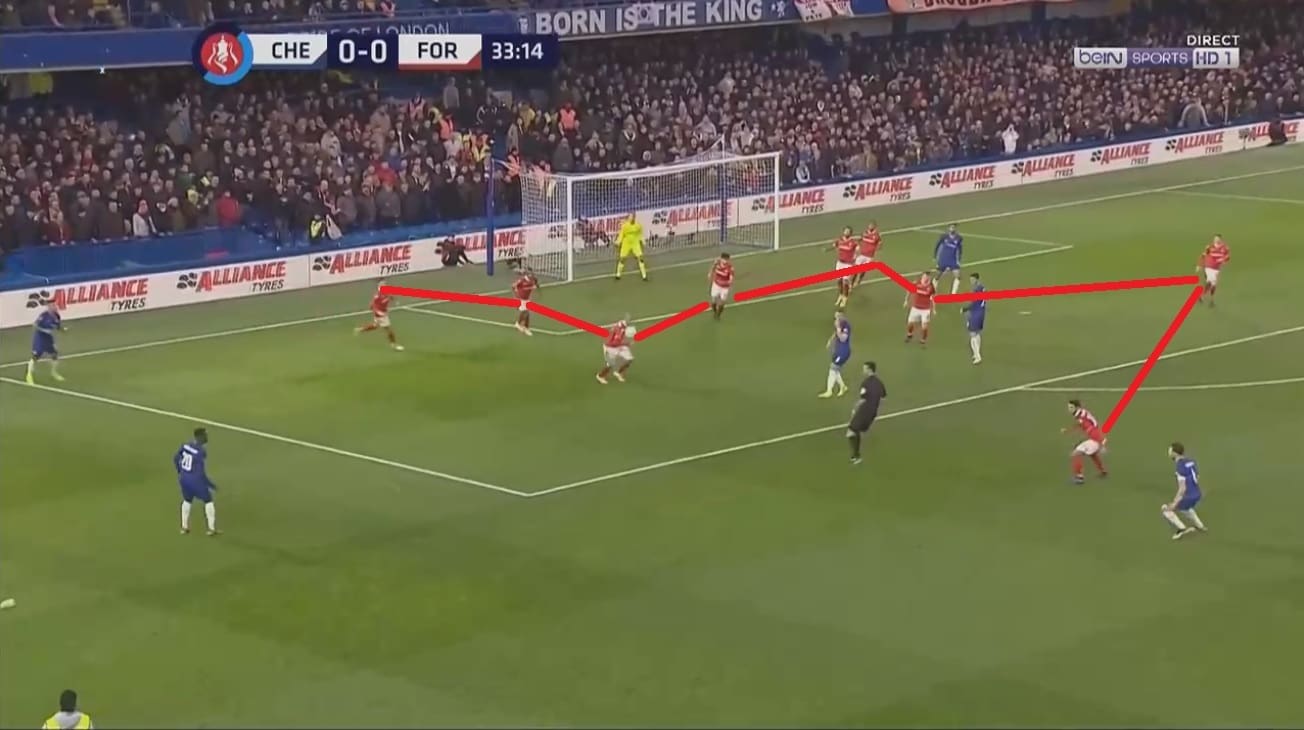
However even though Nottingham Forest’s defensive shape blocked out Chelsea’s attacking attempts, Chelsea could still make their way past it. After half time, Sarri’s men did breach the Forest defence as their front line stretched its play up and out towards the goal line. In other words, Chelsea concluded its attacks nearer to the goal line, thus breaching Forest’s last line of defence.
Chelsea winger Hudson-Odoi had an instrumental part to play here. The England youth international dribbled towards goal to penetrate beyond the opponent defensive lines and made multiple assist attempts from out wide.
The image below demonstartes how Hudson-Odoi’s forward movements breached Nottingham Forest’s last line of defence. His attempts had a big role to play in stretching Chelsea’s attacking shape, especially after the break. The Englishman seems to have strong potential in penetrating opposition defences.

Goals analysis
Hudson-Odoi’s movement on the ball into the Forest penalty area successfully converted into goals twice by Morata. The following picture displays Morata’s first goal assisted by Hudson-Odoi and the build-up leading up to it early in the first half. As Chelsea’s play shifted from left to right, Hudson-Odoi found himself with enough room to dribble towards the byline and conclude the attack from there.
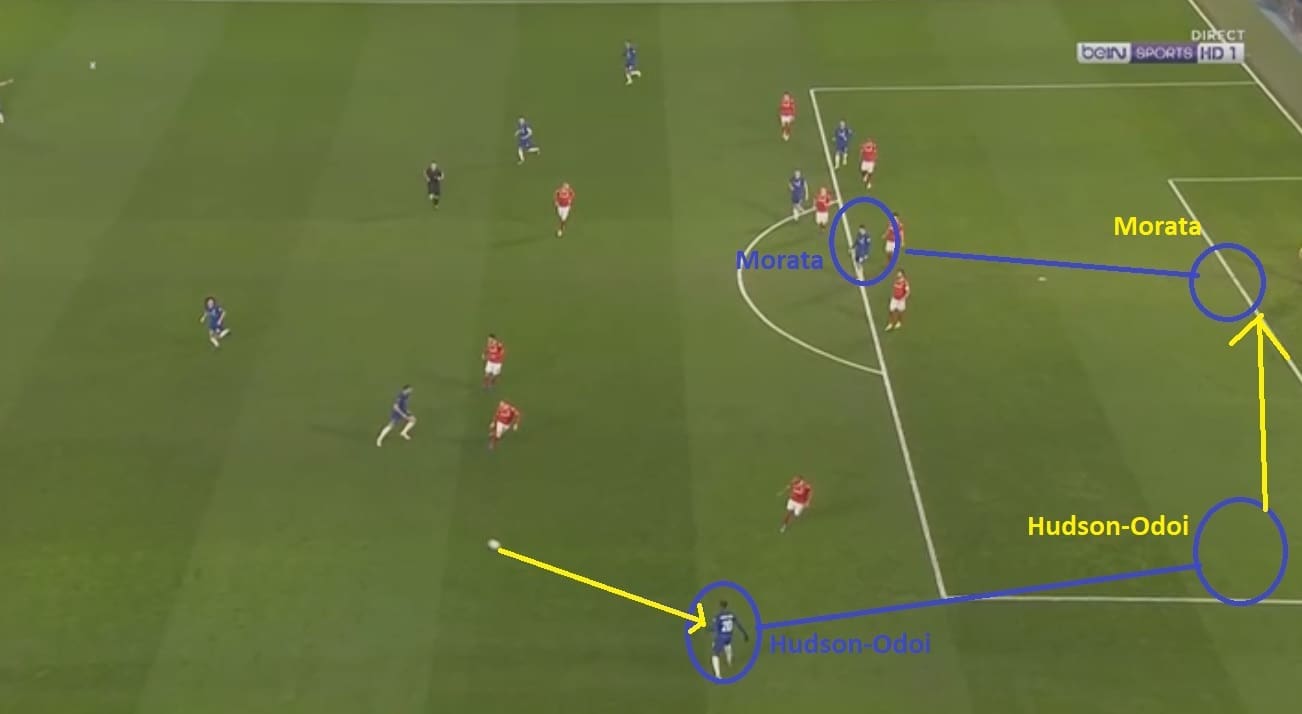
The second goal also followed a similar build-up and coordination between Hudson-Odoi and Morata. As Chelsea won the ball back in their half, they initiated a transitional attack which ended up with the Hudson-Odoi driving to the byline out wide before assisting Morata for the final goal of the game.
In response to the Englishman’s movement, Nottingham Forest’s defence was drawn out of shape to mark the winger. This only disorganised the defence, giving Morata space to comfortably score.
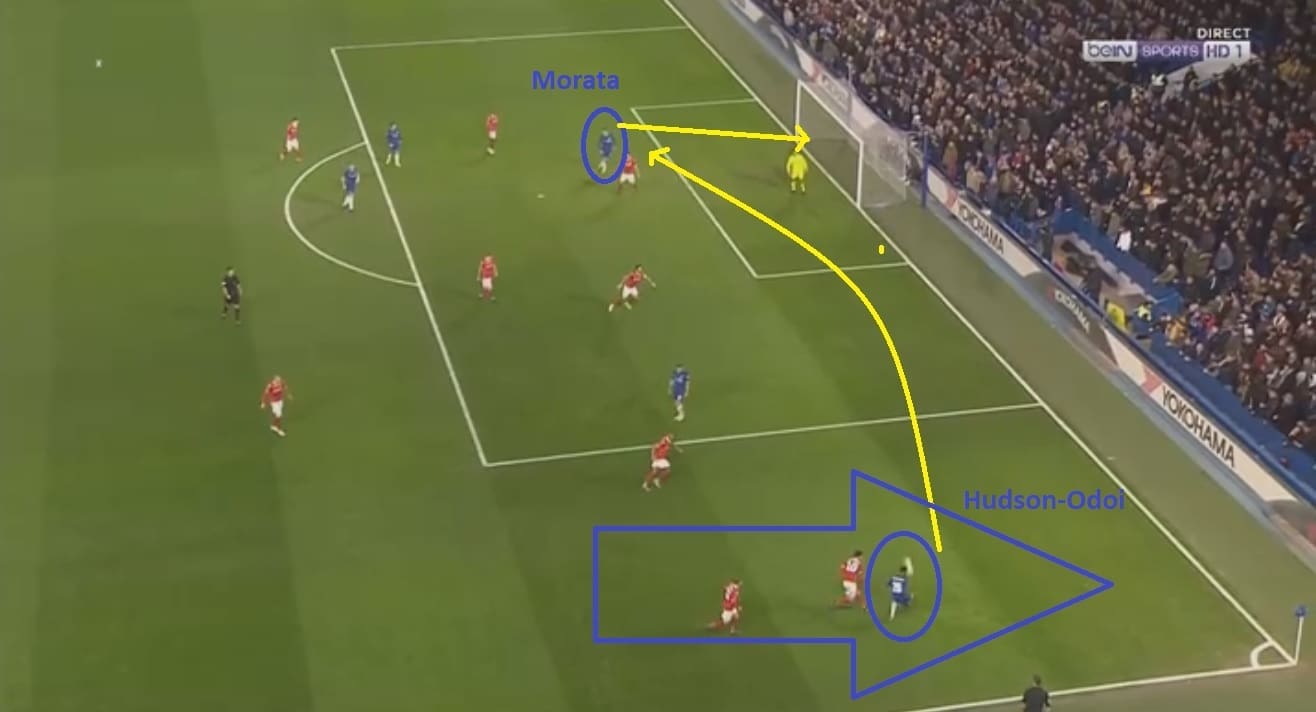
Conclusion
Chelsea are looking on course to defend their FA Cup title. The Premier League side scored both goals by taking advantage of the transitional phase which disturbed the tactical balance of the Championship side’s defence. Then, Husdon-Odoi’s wide forward movements coupled with Morata’s presence nearer to the opposition goalkeeper did the rest.
Given that the Blues are still to face more low-block defences this season, the tactic of stretching the attack near the byline should add value to their attack.
If you love tactical analysis, then you’ll love the digital magazines from totalfootballanalysis.com – a guaranteed 100+ pages of pure tactical analysis covering topics from the Premier League, Serie A, La Liga, Bundesliga and many, many more. Get your copy of the FIRST of two December issues for just ₤4.99 here, or the SECOND of the December issues with an annual membership right here.





Comments